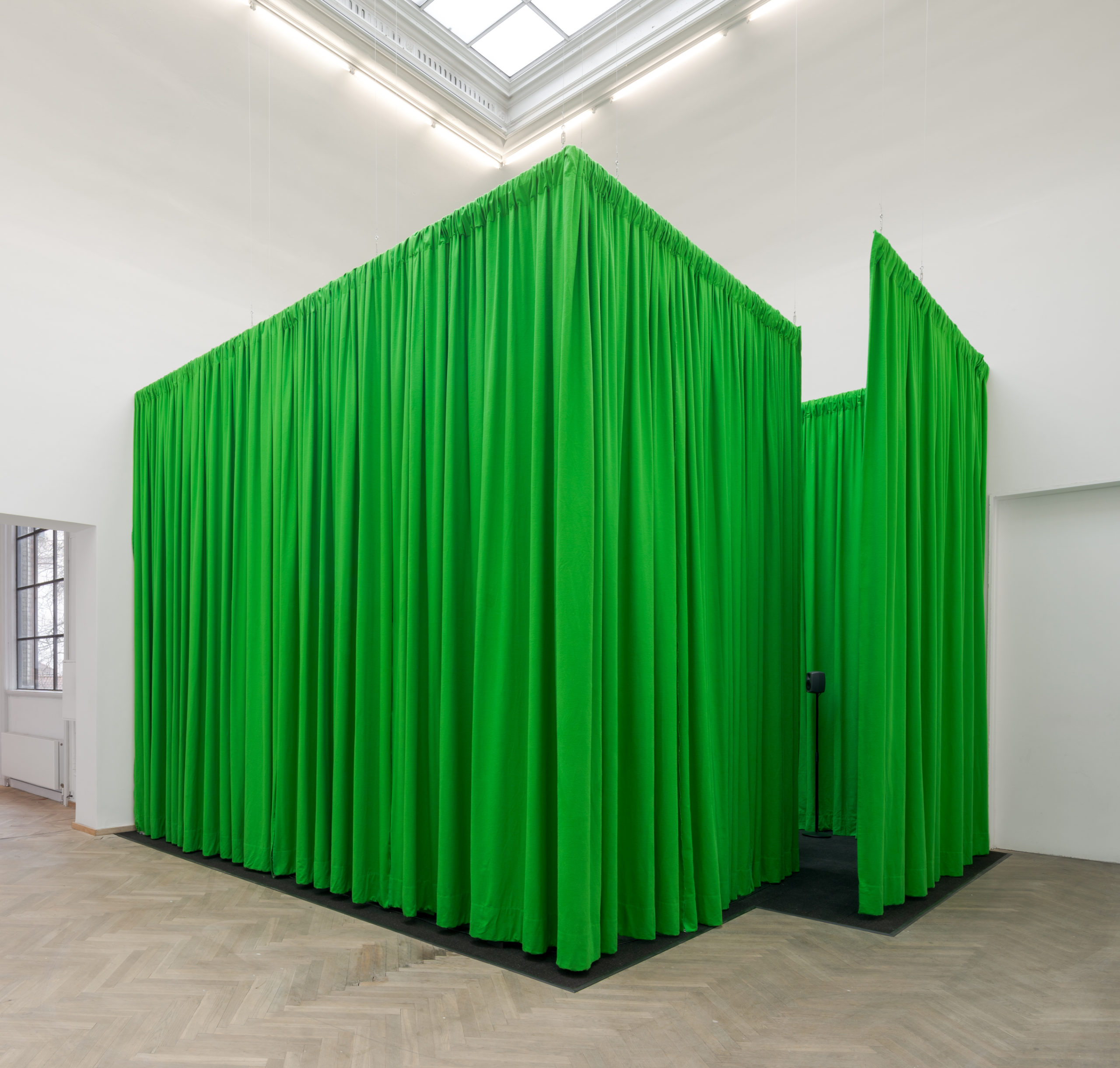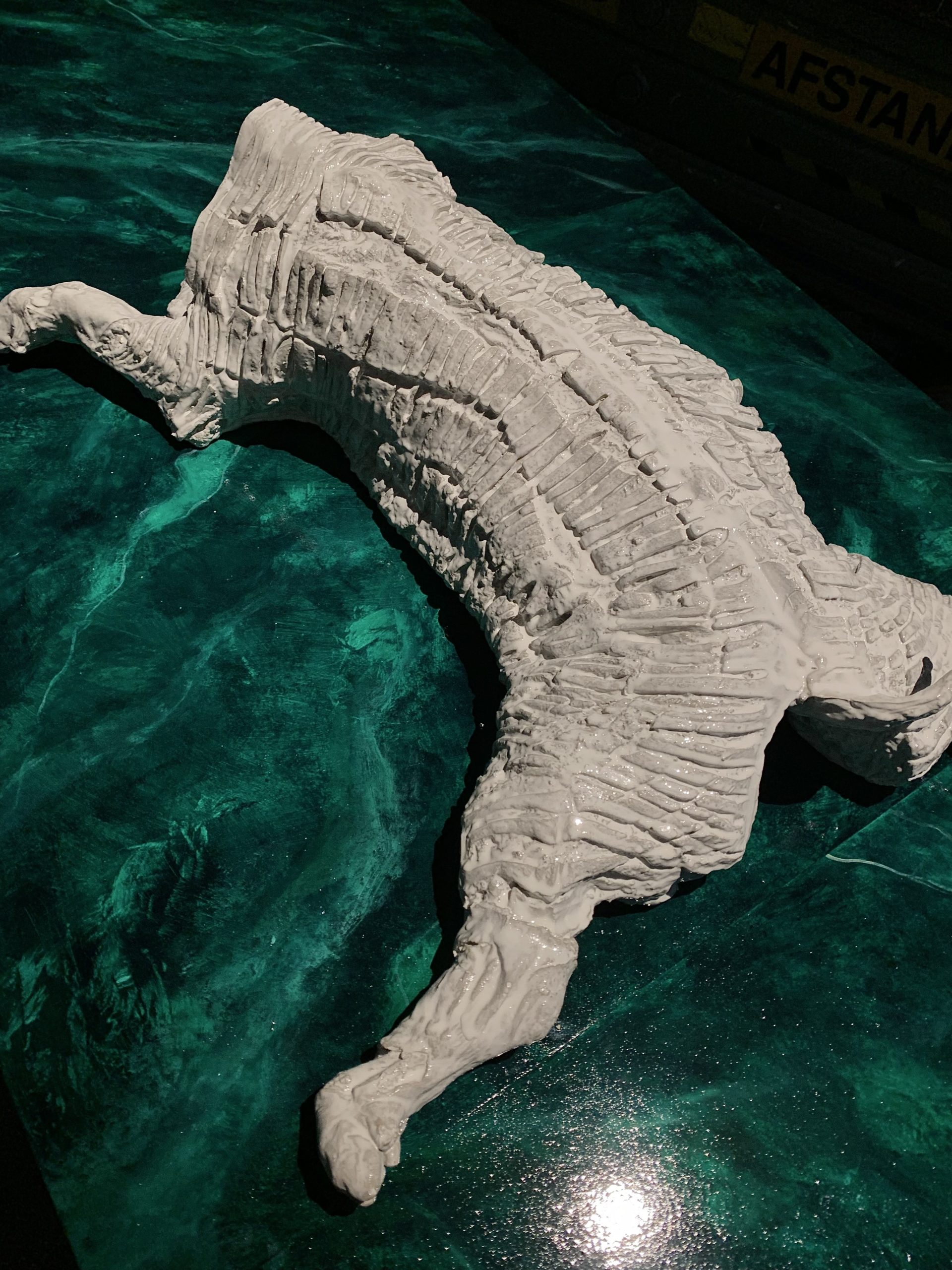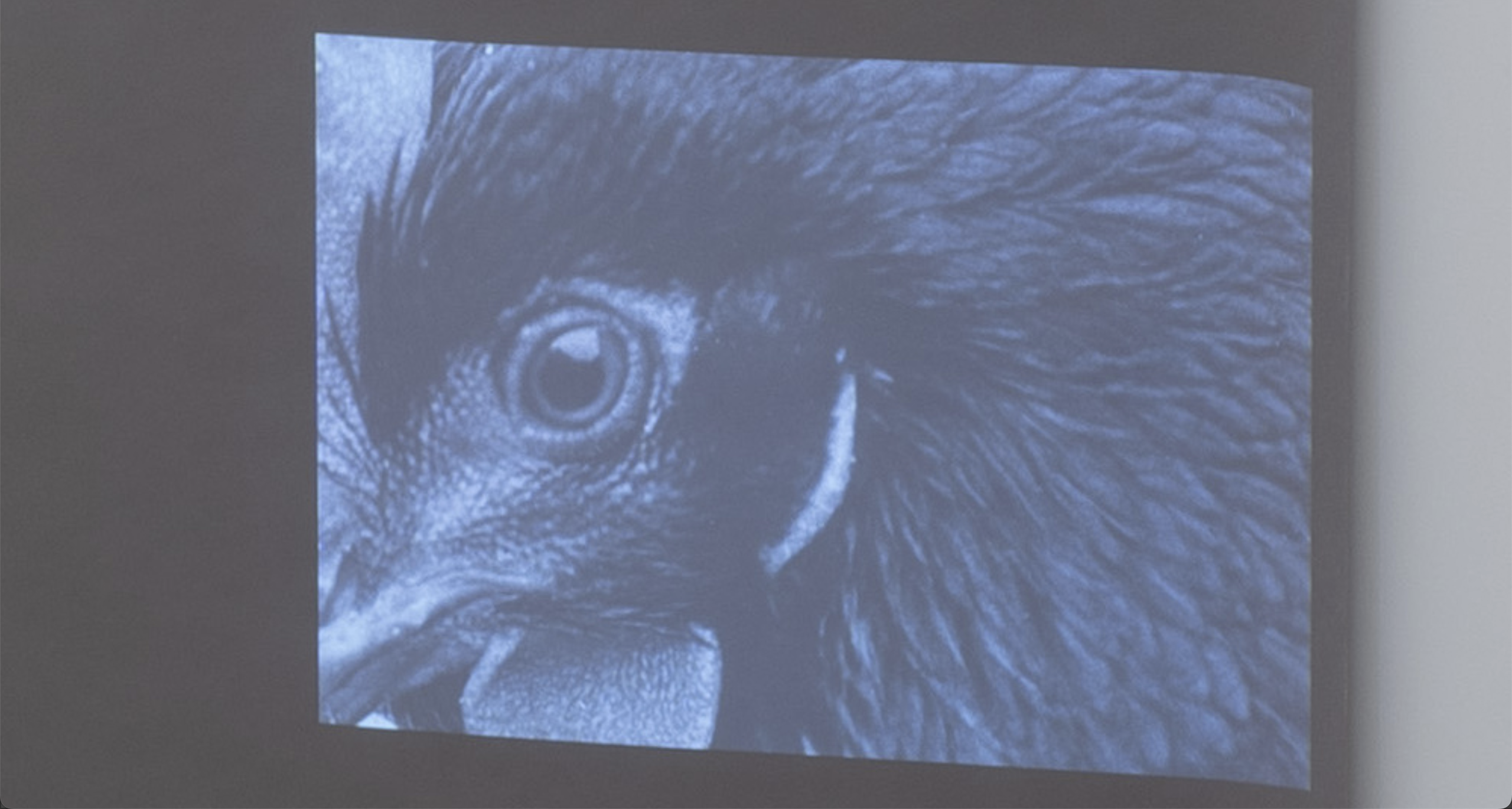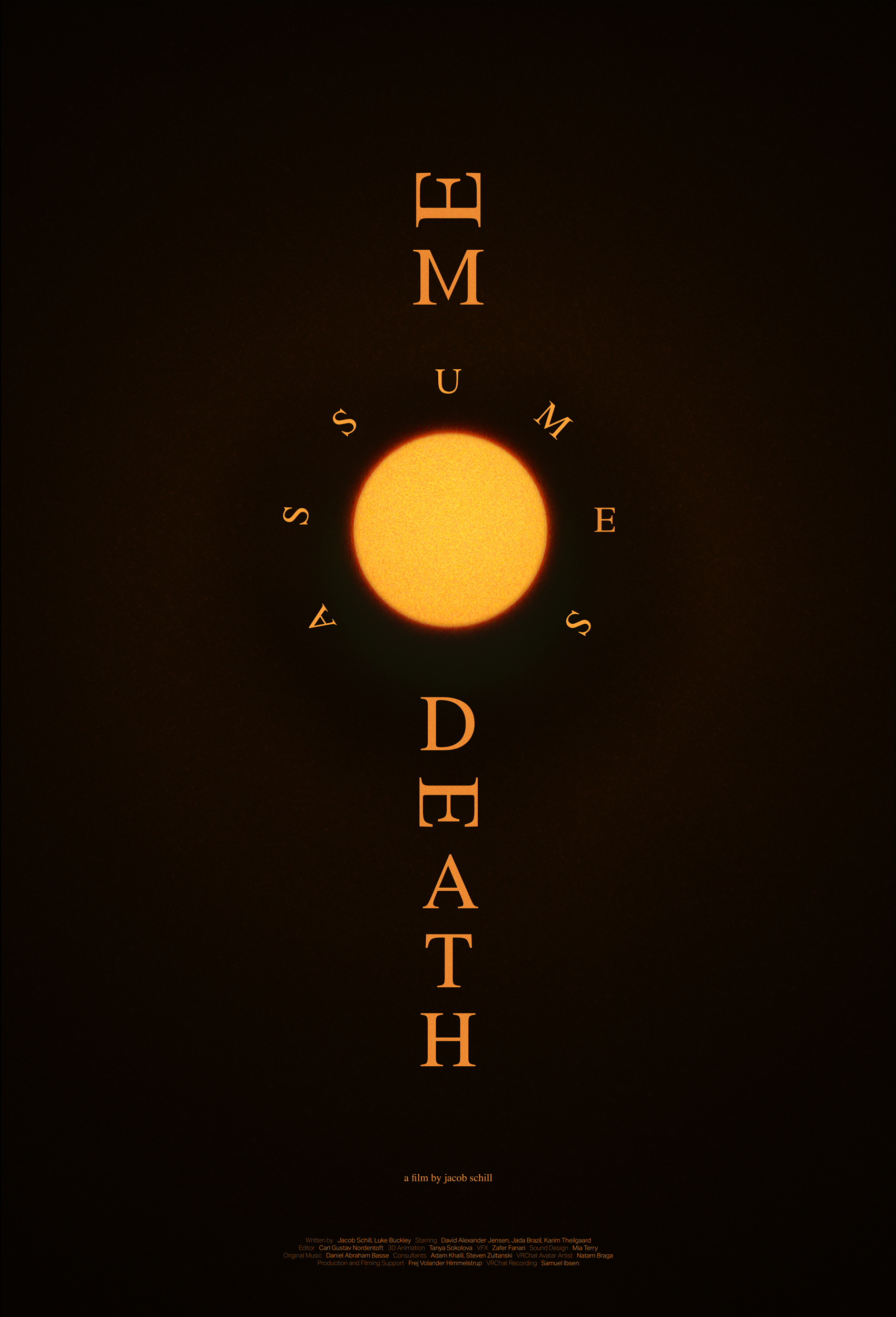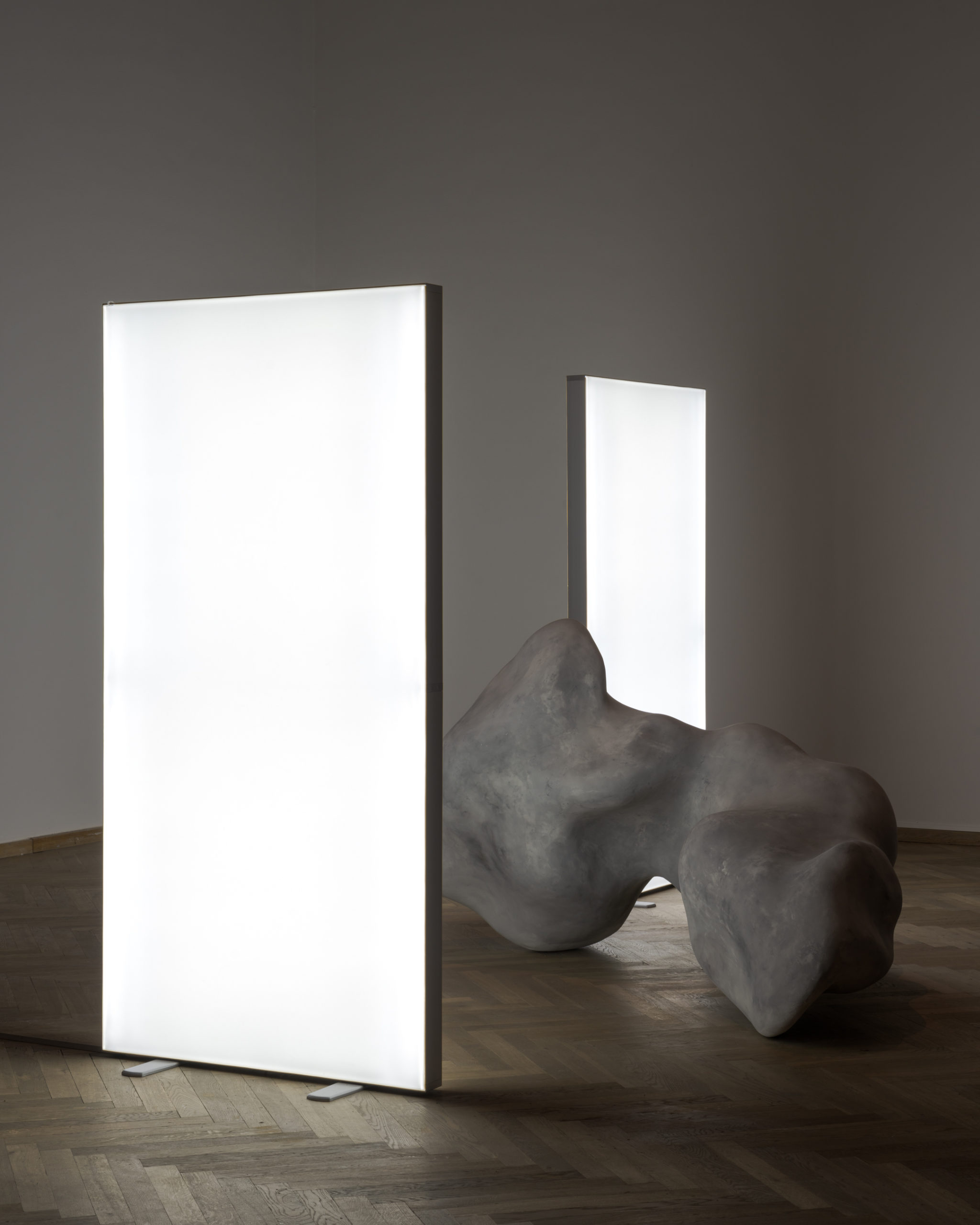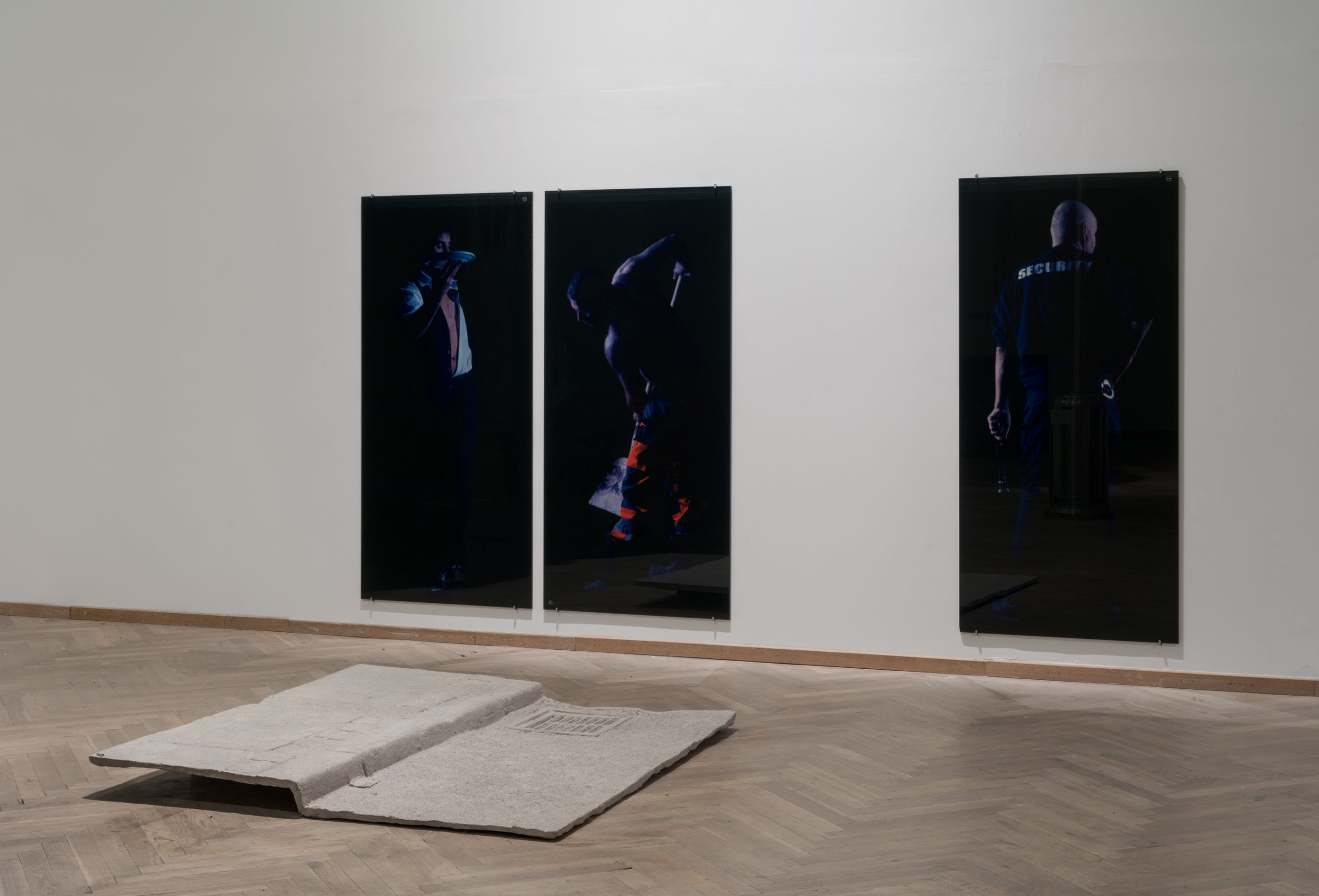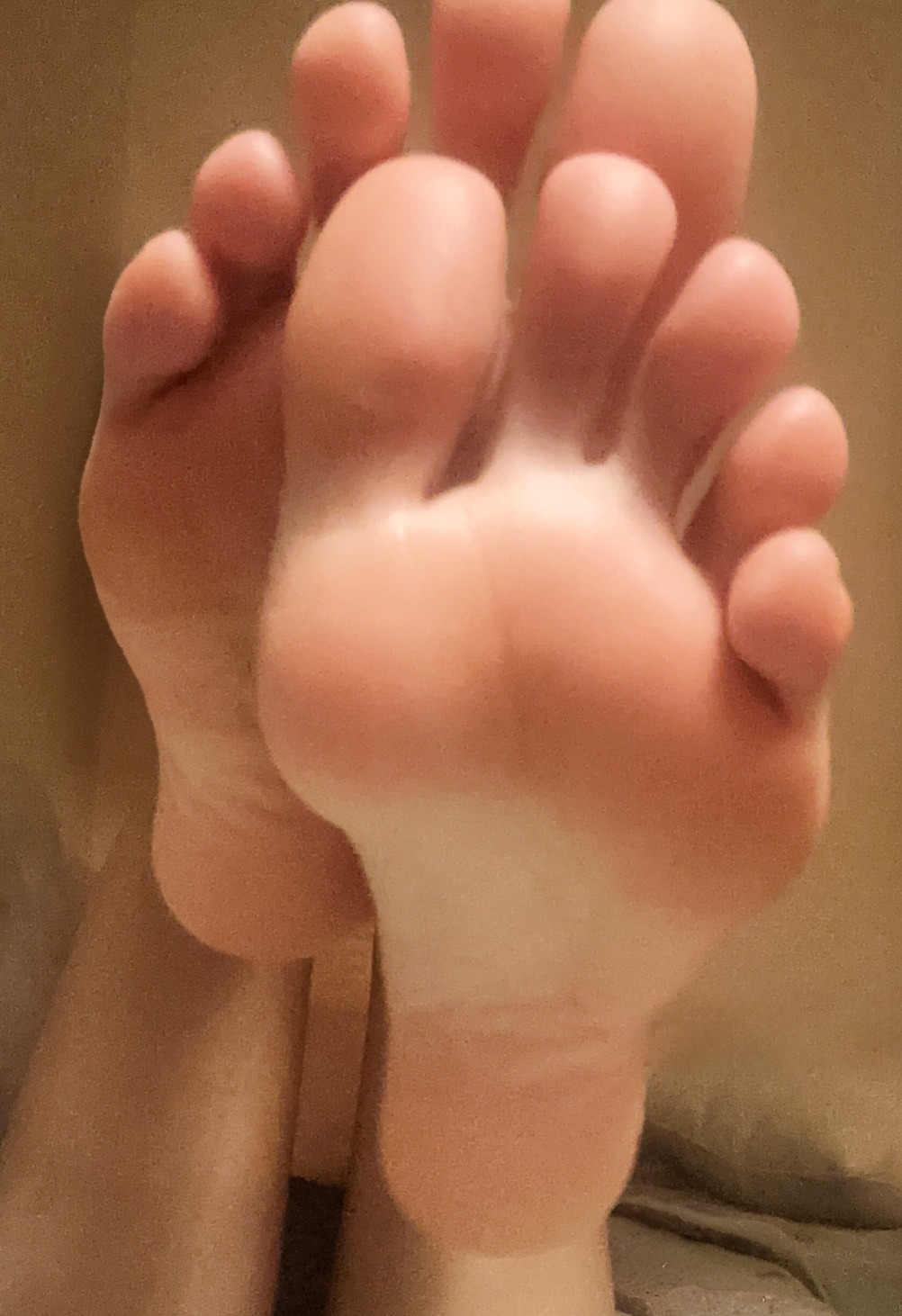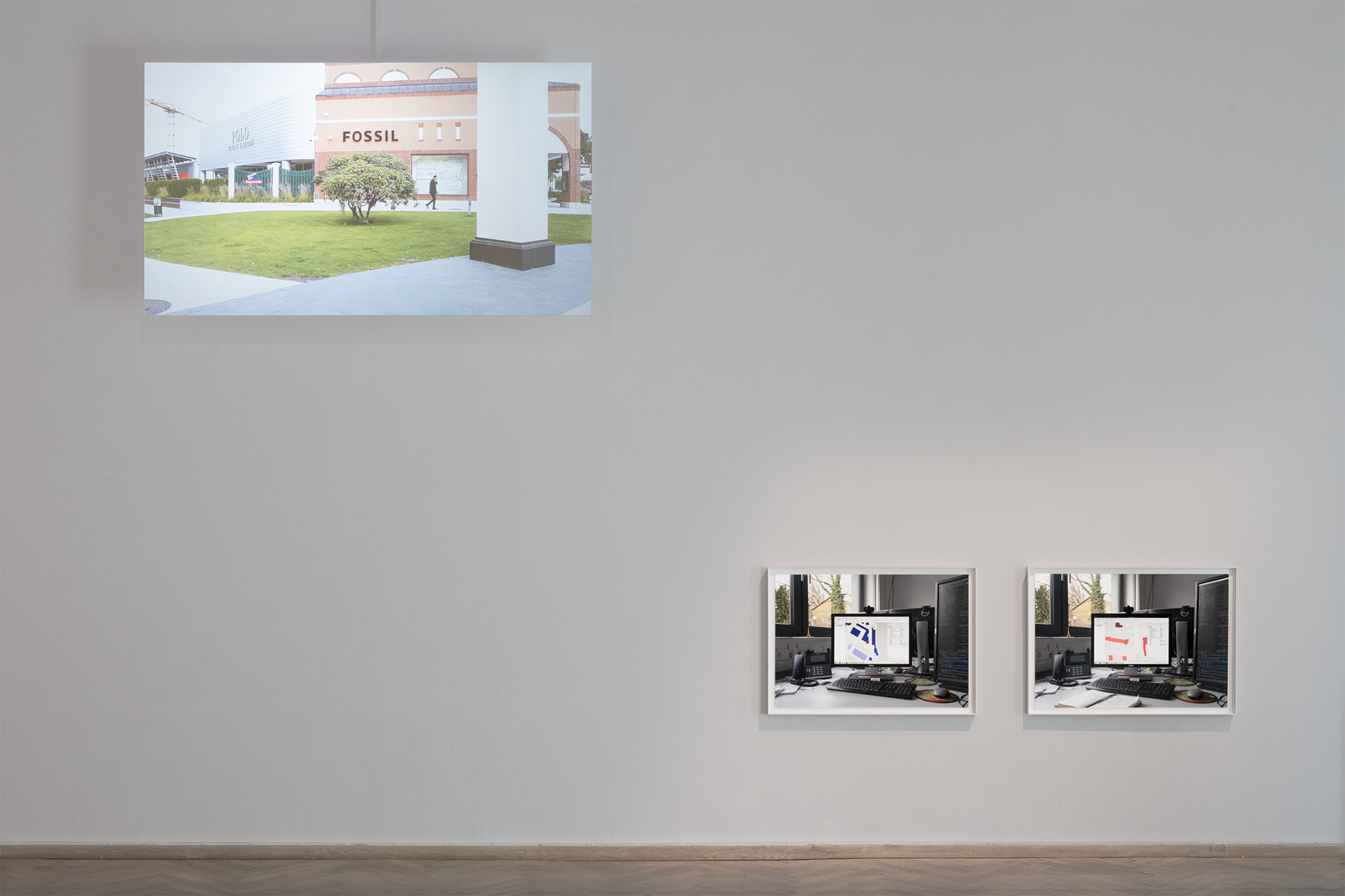




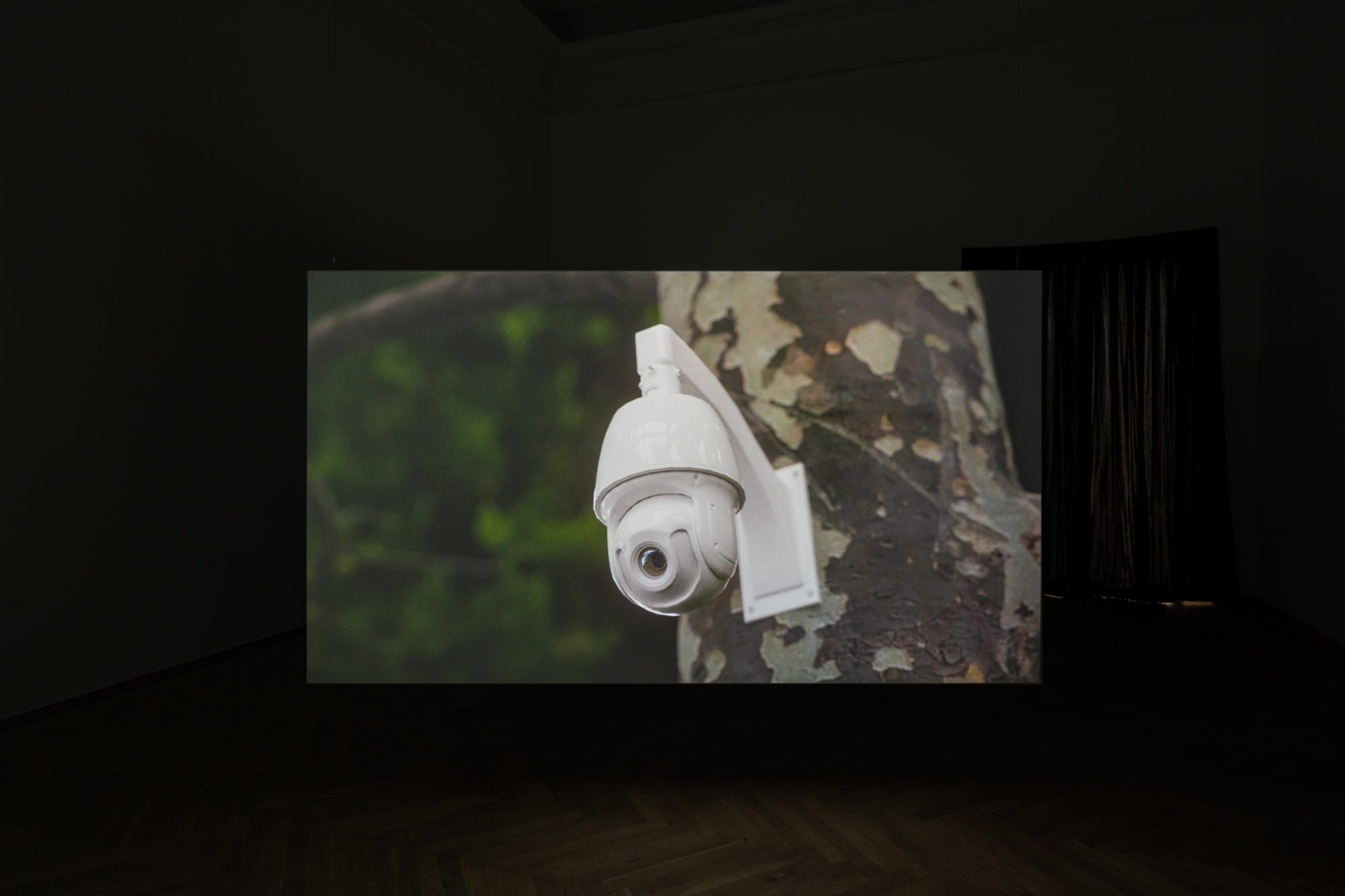
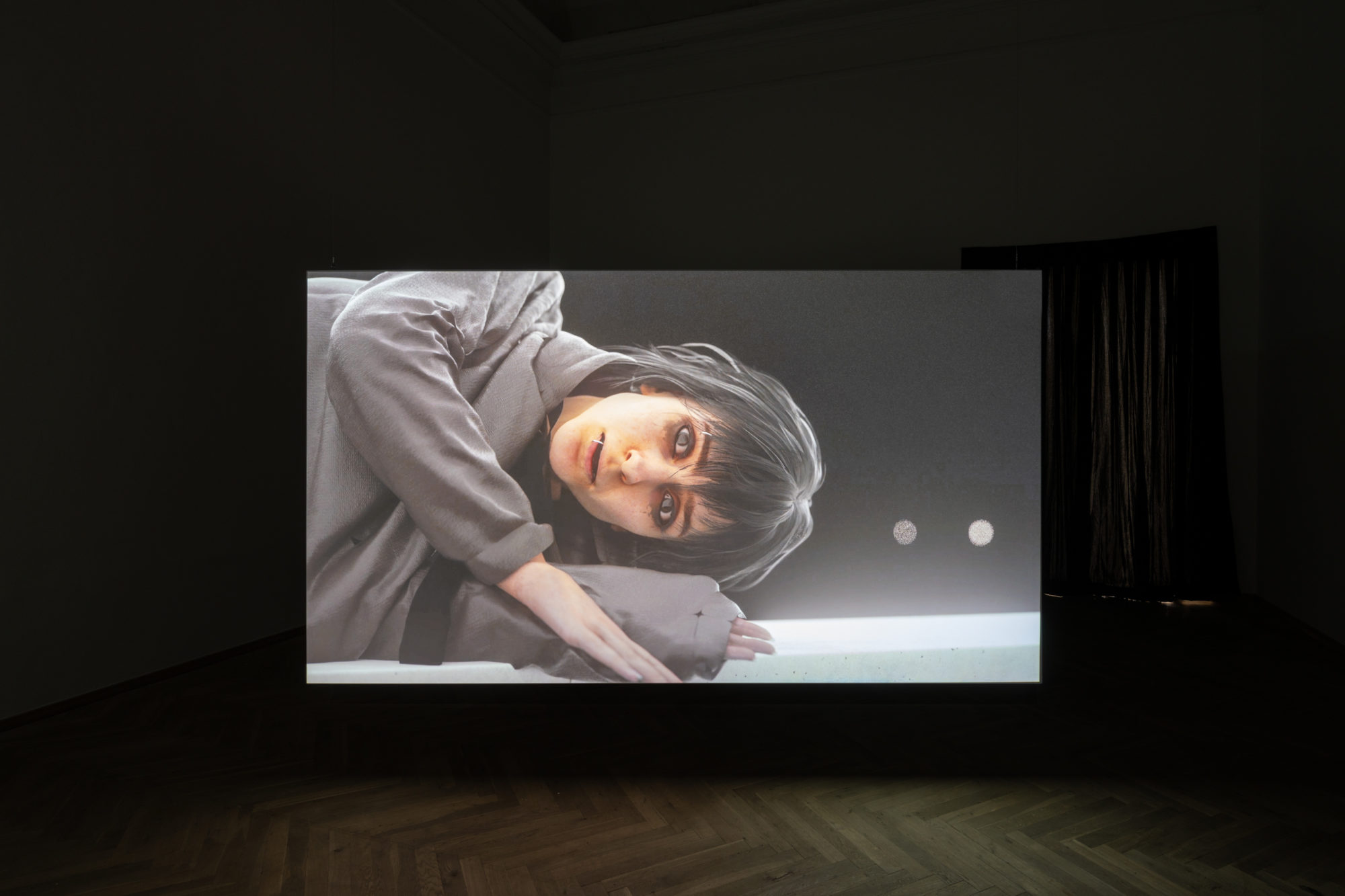
Sara Krøgholt Trier
Do you see the crooked line in the wall? (2024)
Animated video, sound, 14:30 min
“Sara Krøgholt Trier’s practice investigates the construction of reality, often deploying 3D animation, text, and sound to examine how fictions determine how we are able to exist, move, and perceive the world. Inspired by dramaturgy, she explores the space between speculation and the concrete through composition and staging, generating a dream logic that renders uncanny our apprehension of daily life. Trier’s Do you see the crooked line in the wall? is an animated film set in an ambiguous cityscape, a non-place that could be anywhere in our globalized and privatized environment, an abstract, homogenized and frozen space. Indeed, there are no natural light sources, only flickering and tremulous glares from digitally rendered urban utilities, as if the film is played out on a theatrical stage, a black box isolated from the world, yet somehow a metonym for it.
In Trier’s narrative, we meet three characters – a teenager without identity, an anxious millennial and a retired fortune-teller who has given up on the future as such. At an outdoor fitness station, in a campus area and in an abandoned skyscraper, the three characters meet and reflect on shared experiences of alienation in a world they can’t seem to influence nor mirror themselves in. They look throughout their world for meaning and authentic experience, but find only bureaucratic and commercial messages. Elaborating both animation and urbanism as practices in scenographic world-building, their environment is minimally furnished with abstracted representations of the urban landscape, a tree here, a bench or a fountain there, an empty office. The characters linger in these fabricated spaces, these stage settings for the public to collect, yet they are abandoned and anonymous, within a deadened simulacra. The city is no longer a space for social life or for identification, rather it seems to organize isolation and separation. Like the characters, the space has lost its own concrete reality, its very particularity, yet it is also the subject of surveillance, not least of all from the audience themselves.
Through both sincerity and humor, the artist points to the ways the built environment, technology, and other ideological and physical infrastructures influence the way we are able to move and act in the world, organizing our social forms, and thereby patterning how we perceive reality. The overt staging of reality as a set, a mere projection or representation, encourages the audience to see themselves from the outside, and self-reflect, asking: ‘What fictions do I find myself a part of? Are there other stories available than the ones that I have previously known?”
– Post Brothers
